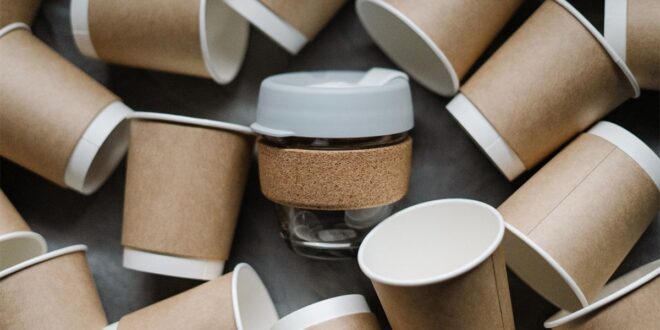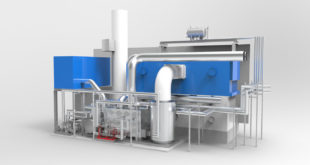We’ve all been there: sipping our morning coffee or tea from a convenient paper cup, only to wonder—can I recycle this? While it seems like an easy yes, the reality is more complex. Paper cups are a common part of our daily routines, yet they pose unique challenges when it comes to recycling.
If you’re looking to reduce waste and recycle responsibly, here’s what you need to know about recycling paper cups—and what actions you can take.
Key Points:
- Most paper cups have a plastic lining that complicates recycling.
- Not all recycling facilities can handle paper cups.
- Local recycling rules are not universal.
- Coffee shops may have designated return bins.
- Components like lids and sleeves require separation.
- Reusable cups remain the best option.
Why Aren’t All Paper Cups Easily Recyclable?

At first glance, paper cups look like they’re made of… well, paper. But most disposable cups are actually lined with a thin layer of plastic (polyethylene) to make them waterproof. This lining prevents liquids from soaking through but also makes it difficult for standard paper recycling facilities to process them.
The plastic lining needs to be separated from the paper fibers, a task that only specialized recycling facilities can handle. As a result, many cups thrown into regular recycling bins still end up in landfills.
How Can You Recycle Paper Cups?
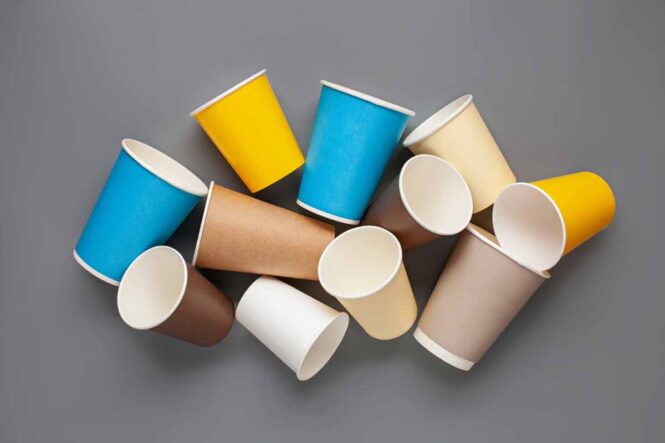
Despite the challenges, it’s possible to recycle paper cups—if you follow the right steps:
1. Check Local Recycling Guidelines
Recycling rules vary depending on where you live. Some cities have dedicated facilities equipped to handle paper cups, while others do not accept them at all. Before tossing your cup in the recycling bin, check your local authority’s website or waste management guidelines to see if they accept paper cups.
2. Taking part in the Cup Box Challenge
Using a cup box to store your recyclable cups and trying to get the most recycled cups out of everyone not only is fun, it also is helping the environment.
3. Use Designated Collection Points
Some coffee shops and retailers have partnered with specialized recyclers and offer in-store collection bins for used cups. By returning your cup to these designated points, you ensure it’s sent to the right facility for processing.
4. Separate the Lid and Sleeve
Most paper cups come with plastic lids and cardboard sleeves. These components often require separate recycling streams. Typically, the cardboard sleeve can be recycled with paper, while the lid goes with plastics—if they’re accepted in your area.
5. Empty and Rinse the Cup
Before recycling, make sure the cup is empty and free of liquid residue. While you don’t need to scrub it clean, removing leftover coffee or tea prevents contamination of other recyclable materials.
6. Consider Reusable Alternatives
Of course, the most sustainable option is to reduce the need for single-use cups altogether. Investing in a reusable cup not only cuts down on waste but is also rewarded by many cafes with discounts on your drink.
Innovations in Paper Cup Recycling
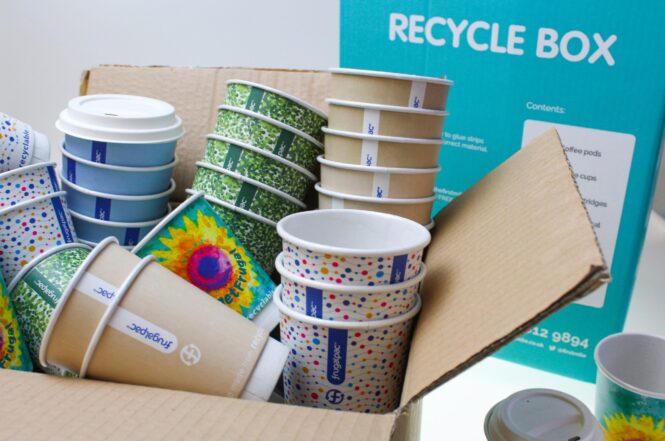
The good news is that progress is being made. Many manufacturers are exploring fully compostable cups or cups with water-based linings that are easier to recycle in standard facilities. In some regions, initiatives are underway to install more cup-specific recycling bins in public spaces.
If you’re passionate about sustainability, supporting businesses that use recyclable or compostable cups can help drive industry-wide change.
Signs Your Area Supports Cup Recycling
It’s not always obvious if your city or town recycles paper cups. But a few signs can help you spot whether your region has made progress:
- Clear listings on municipal waste websites about cup acceptance.
- Special bins in cafes or high-traffic public places.
- Participation in national recycling campaigns or programs.
- Inclusion of hot drink cups in single-stream recycling guidelines.
- Local social media or news coverage about cup recycling efforts.
If none of these are in place, chances are your city does not yet support proper paper cup recycling.
Tips to Improve Your Recycling Habits
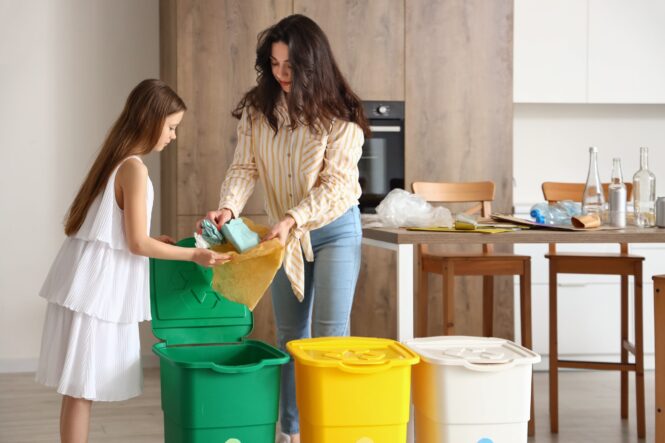
Bad recycling habits lead to more waste. Strengthen your daily actions with small adjustments:
- Carry a collapsible reusable cup in your bag.
- Always check the bin label before throwing your cup.
- Separate lids and sleeves immediately after finishing your drink.
- Rinse your cup at the cafe’s sink before tossing it.
- Ask your local coffee shop what happens to collected cups.
Every small choice adds up across weeks, months, and years.
What Cafes Should Do Next
Coffee shops have a direct line to consumer behavior. They play a vital role in closing the loop. Here are realistic ways businesses can make a difference:
- Provide clearly marked recycling bins at exits.
- Partner with recycling companies and promote that fact.
- Train staff to guide customers about cup disposal.
- Offer rewards for customers who bring reusable mugs.
- Switch to cups with easier-to-process linings.
When retailers lead by example, customers follow.
The Case for Legislation

Your effort matters, but personal responsibility only goes so far when the system itself remains broken. Laws shape the choices companies make. Without legal pressure, most businesses will not switch to recyclable cup materials or invest in better disposal options. That’s not cynicism—it’s reality. Changing production lines costs money, and unless required by regulation, few brands will take that step on their own.
Stronger legislation can solve core problems that individuals cannot fix alone. It can force cup manufacturers to use materials that actually work with existing recycling systems. It can require large chains to collect used cups in-store and send them to proper facilities.
It can unlock funding to build specialized recycling infrastructure that doesn’t yet exist in many cities. It can even place financial penalties on packaging that creates more harm than good.
But laws don’t pass themselves. Governments respond to pressure. If people demand higher standards, they’re more likely to act. That’s where your voice plays a role. Support local campaigns. Sign petitions. Vote with sustainability in mind. Systemic change is slow, but it doesn’t happen at all without people pushing for it.
How to Talk to Friends About It
Many people toss cups without knowing the damage. Sharing knowledge politely makes a difference. Here’s how to bring it up:
- Keep it casual: “Hey, did you know most cups aren’t recyclable unless they go to special places?”
- Offer a solution: “I bring a foldable mug now—super easy.”
- Avoid blame. Focus on shared goals like less waste.
You’re not lecturing—you’re empowering.
Small Actions, Big Impact
While recycling paper cups requires a little more effort, each step you take contributes to reducing landfill waste and promoting a circular economy. Whether it’s using designated recycling points, choosing a reusable cup, or spreading awareness, your actions matter.
Next time you enjoy a takeaway coffee, take a moment to consider where the cup will end up. By recycling thoughtfully, we can all play a role in creating a more sustainable future—one cup at a time.
 Imagup General Magazine 2025
Imagup General Magazine 2025
